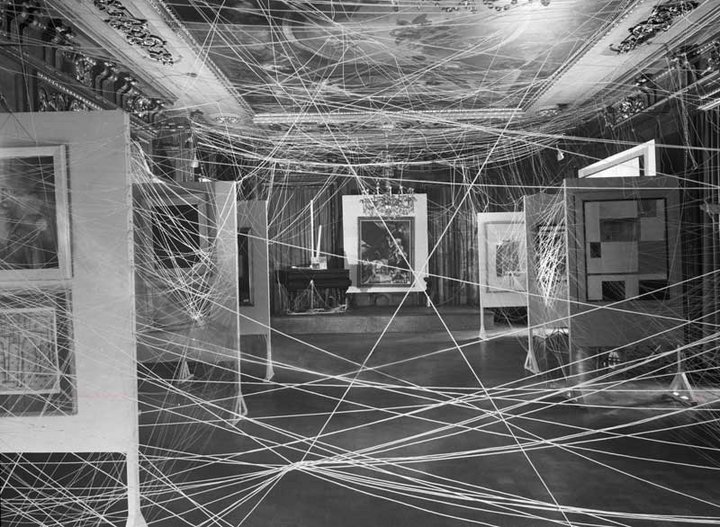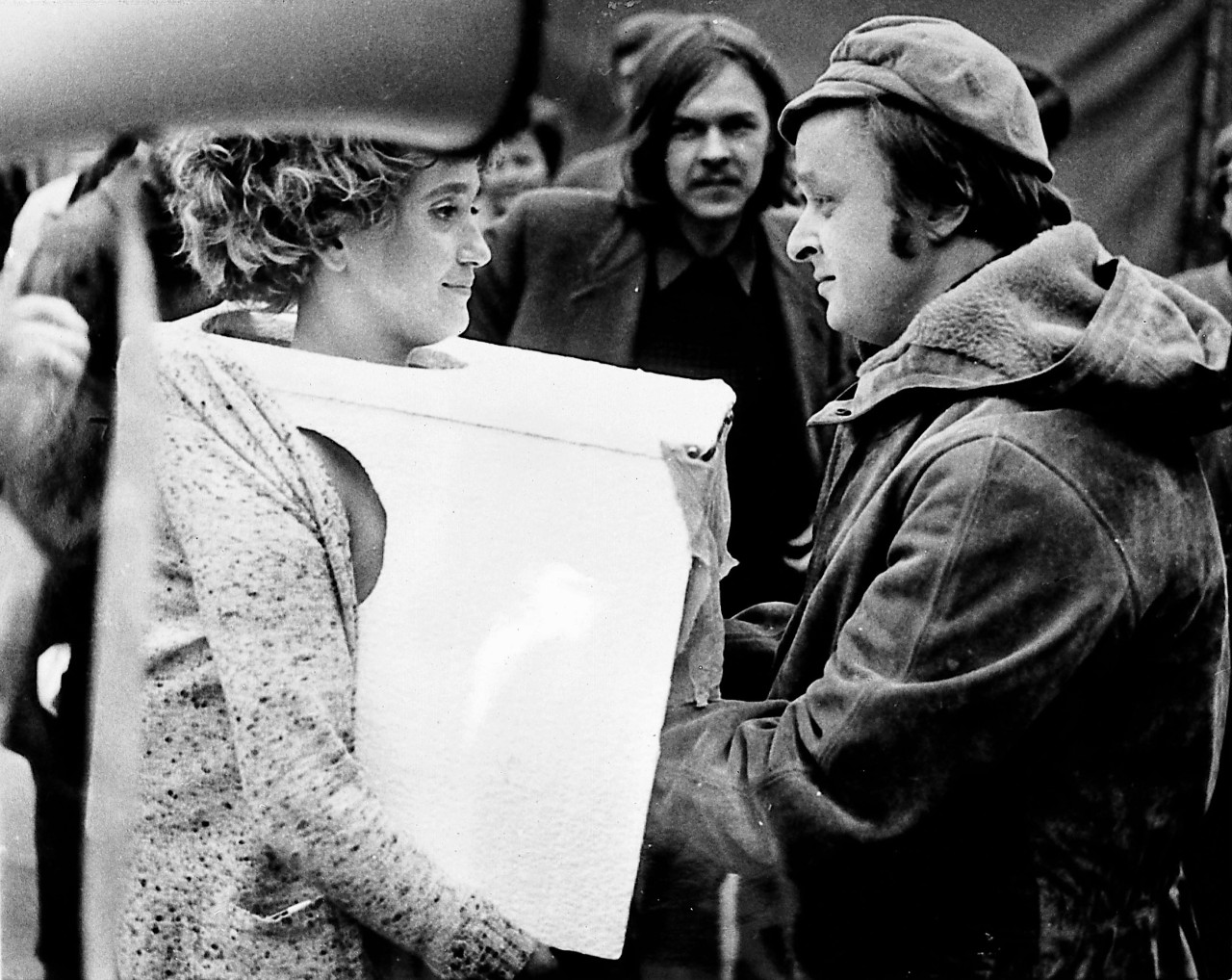Art Theory - 25/02/19
IN CLASS WORK
Art viewing/making : installation practice
Art Theorist/curator : Amelia Jones






Art viewing/making : installation practice
Art Theorist/curator : Amelia Jones
Art Viewing/Making : Installation Art
Installation concentrates on the relationships between things and their contexts rather than the one object.
The meaning rather than ‘residing ‘in’ the object for the perceptive viewer to see it, is now seen to be something made in the encounter with the viewer. (Archer, 1994).
…addresses the viewer directly as a literal presence in the space…an embodied viewer whose senses of touch, smell, and sound are as heightened as their sense of vision, rather than imaging the viewer as a pair of disembodied eyes that survey the work from a distance.
…this insistence on the literal presence of the viewer is arguably the key characteristic of installation art
Bishop (2005) p 6
Beginnings
Western in its bias
Beginnings in work of El Lissitzky, Kurt Schwitters and Marcel Duchamp
Environments, happenings late 1950’s
Minimalist sculpture 1960’s
Rise to prominence from 1970’s, 1980’s
“institutionally approved art form par excellence of the 1990’s, …large museums e.g see works installed Turbin Hall of Tate Modern etc (Bishop,2005. p.8)
El Lissitzky, Proun Room 1923 (reconstructed 1965)
Allocated small room in gallery decided to use all 6 surfaces of room; walls, floor, ceiling
Attaching reliefs, to make a unified display
Drew viewers in and encouraged movement within space
Thinking about space as “ that which is not looked at through a keyhole’ but which surrounds the viewer. Rejecting Renaissance ‘cone of perspective’ which fixes viewer in a single vantage point.
Lissitzky argues “space does not exist for the eye only : it is not a picture; one wants to live in it.
…seeking a practical, utilitarian revision of conventional perspective, so that space becomes not a pictorial abstraction but a real arena in which every subject must act’…a blueprint for activating and engaging the viewer in everyday life and politics.
Bishop (2005) p.80-81
Kurt Schwitters, Merzbau 5 Waldhausenstrasse, Hannover, c.1932

Developed by Schwitters in his home
Began three times: Hannover (destroyed air raid) , Norway (fire) and finally in exile in England in 1947.
Merzbau in Hannover The walls and ceiling were covered with three - dimensional shapes and crowded with materials and objects - or "spoils and relics", as Schwitters himself put it - which were contained in countless nooks and grottoes, some of them totally obstructed by later additions to the work, with the result that their contents then existed only in one's memory of the Merzbau in one of its former states. The Merzbau was - "on principle" - an uncompleted work and continued to grow, changing constantly.
Consequently, the Merzbau was also a kind of "constructed autobiography, a building of personal and historical reminiscences.
At the beginning of the thirties, Schwitters turned the Merzbau into a constructivistic assemblage of white wood and plaster (shown on the surviving photographs, reflecting the change in his own personal circumstances. It was under the pressure of the changing political situation in Germany that Schwitters' Merzbau became an alternative to restrictive reality.
http://www.merzbau.org/Schwitters.html
// I like this artist
context, what happened in 1930? rise against modern art
I like the monochromatic of this work and enjoy it. Though his other works are quite cluttered and 'scrap book' like making it very cluttered and overly textured. Though I do not really like this works I do like the concept and Idea of the style of work and would be interested in trying the style. //
Duchamp, Mile of String 1942, New York
In 1942, Andre Breton organised a retrospective exhibition of Surrealist art in New York: First Papers of Surrealism.
Marcel Duchamp created this installation – a gigantic web – called the Mile of String.
He and Breton further more arranged for a number of children to ball in the room thereby making it very difficult for the guests to see the paintings.
http://www.abdn.ac.uk/french/duchamp.shtml
…refuses to abide by conventional practices…it would have been quite difficult for a viewer to maneuver around and through the string to see the more conventional works of art…” (Rosenthal, P.61)
// Duchamp did the urinal, anit art
he also did the "mona lisa has an hot ass"
I actually like this work because of the means behind it before when I didn't know the means and the context behind it I hated his work and I thought it was so obnoxious and annoying. But with context and knowing the reason behind the works I really enjoy his works//

Kaprow’s environments and happenings of the early 1960s
…we are dealing with a shift from art as object to art as process, from art as a thing to be addressed, to art as something which occurs in the encounter between the onlooker and a set of stimuli (Happenings) (Archer, 1994). P.26
Kaprow’s piece 18 Happenings in 6 Parts (1959) is commonly cited as the first happening.
Using scripted score, he created an interactive environment that manipulated the audience with given instructions for their participation e.g. when to applaud, change seats etc
Kaprow views art as a vehicle for expanding our awareness of life by prompting unexpected, provocative interactions. For Kaprow, art is a continual work-in-progress, with an unfolding narrative that is realized through the active participation of the audience.
He developed techniques to prompt a creative response from the audience, encouraging audience members to make their own connections between ideas and events.
http://www.medienkunstnetz.de/works/18-happenings-in-6-parts/

Minimalism drew attention to the space in which the work was shown, and gave rise to a direct engagement with this space as a work in itself...
Claire Bishop, But is it installation Art?
Minimalism and post minimalism’s viewer engagement with an experience, rather than a thing, is useful in relation to the transition from object to installation.
Minimal sculptor Robert Morris discusses how through minimalist sameness, relationships are taken out of the work and made “a function of space, light and the viewers field of vision’, making the viewing process a “self reflexive experiencing in real time” (Archer, 1994, p.22).
This minimalist encounter, where meaning is the result of the viewer’s encounter with the work was criticised by critic Michael Fried as “confrontation”, and as “theatre” (Archer, 1994, p.27).
Cultural theorist Fredrick Jameson suggestion that art now functions as “material occasions for the viewing process” (Archer, 1994, p.28)
// I personally love minimalism, I enjoy the idea of playing with space and creating a work based around the space where the installation will be. I enjoy minimal things and love clutter free spaces. The idea of creating a work that is clutter free and have lots of space and can be developed in many ways and forms, it is a style that can be easily manipulated for own style and preferences. I would like to learn more about minimalism and how I can develop it and create more unique things//
Key Ideas
“Feminist artists sought to create a dialogue between the viewer and the artwork through the inclusion of women's perspective. Art was not merely an object for aesthetic admiration, but could also incite the viewer to question the social and political landscape, and through this questioning, possibly affect the world and bring change toward equality” Ref: http://www.theartstory.org/movement-feminist-art.htm
//I think feminism is very interesting because of the conversation it creates. You either agree with it or you don't. People have a lot of opinion on feminism and can think its a good idea or a pointless idea, some women do take it to far and take it past the point of being equality and women having the same rights as men. This is why I think it is such a controversial thing because women do take it to far. Though women had to do things outrageous and questionable back in the 60's and 70's because they didn't have a voice like we do know, and that's what I think is important as if it wasn't for these type of women we wouldn't have our rights today. I personally do not think we need to do things like this anymore and that's why its now it still has a big shock. //

Valie Export
Tapp und Tastkino (1968-71)
// I think the idea behind this is quite interesting as I can't seem to grasp the hole idea and context behind it. I think its a great idea, but The way it was executed is very interesting and bold.
It amazes me how this still can shock people years later and that's what I do like this.
How did this affect here physiologically, and how she was able to preform this with out feeling violated or did she feel violated?
This piece is really interesting because of the conversation it creates and how it raises concern for the women and her safety and how she feels. Though we didn't talk much about how the men/women reacted to it, how did people interact with it, how did this affect the society expectations of this time? did it get the reaction it wanted? Did it shock people them like how it still shocks people now? are the reactions now the same as when it happened?//
“Feminist artists often embraced alternative materials that were connected to the female gender to create their work, such as textiles, or other media previously little used by men such as performance and video, which did not have the same historically male-dominated precedent that painting and sculpture carried. By expressing themselves through these non-traditional means, women sought to expand the definition of fine art, and to incorporate a wider variety of artistic perspectives” Ref: http://www.theartstory.org/movement-feminist-art.htm
Semiotics of the Kitchen, Martha Rosler, 1975
https://www.youtube.com/watch?v=Vm5vZaE8Ysc
“Before feminism, the majority of women artists were invisible to the public eye. They were oftentimes denied exhibitions and gallery representation based on the sole fact of their gender. The art world was largely known, or promoted as, a boy's club, of which sects like the hard drinking, womanizing members of Abstract Expressionism were glamorized. To combat this, Feminist artists created alternative venues as well as worked to change established institutions' policies to promote women artists' visibility within the market” Ref: http://www.theartstory.org/movement-feminist-art.htm
Adrian Piper, Catalysis Series 1970’s

Key aspect: concern with the viewers presence
As Kabakov puts it: “The main actor in the total installation, the main centre toward which everything is addressed, for which everything is intended, is the viewer.”
He reiterates one of the dominant themes of installation art since it emerged in the 1960s: the desire to provide an intense experience for the viewer.
Over the following decade, this activation of the spectator became seen as an alternative to the pacifying effects of mass-media television, mainstream film and magazines.
Claire Bishop, But is it installation Art?
Wide variety of work calls itself installation art…
Bishop identifies a persistence of certain ideas in the work of contemporary artists who work with installation.
1. A desire to activate the viewer – as opposed to the passivity of mass-media consumption
2. And to induce a critical vigilance towards the environments in which we find ourselves.
…When the experience of going into a museum increasingly rivals that of walking into restaurants, shops, or clubs, works of art may no longer need to take the form of immersive, interactive experiences.
Rather, the best installation art is marked by a sense of antagonism towards its environment, a friction with its context that resists organisational pressure and instead exerts its own terms of engagement. ..
Claire Bishop, But is it installation Art?


Comments
Post a Comment